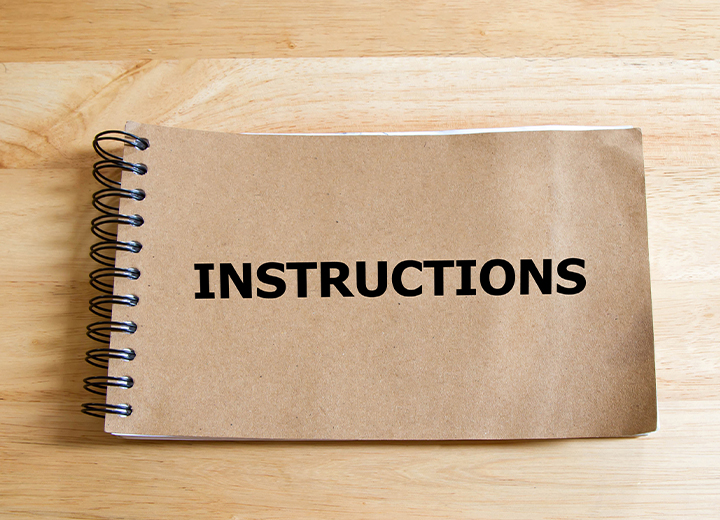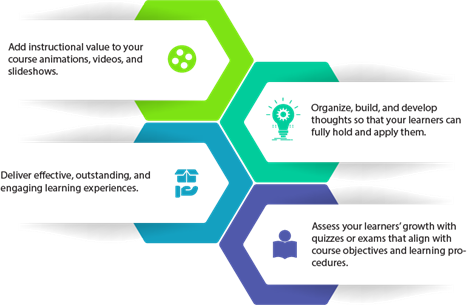The digital revolution, combined with the global pandemic, growing inequality, and talent shortage, has emphasized the need for reskilling and upskilling. As a result, educational institutions have taken the prime role in providing their students with an improved learning experience. In fact, with the radically changing context for education, improving the learning experience has become a necessity rather than a prerequisite. According to a report by Research and Markets, the global eLearning market will reach a whopping total market value of $325 billion by 2025.
And, when it comes to delivering a best-in-class learning experience, the role of instructional design becomes paramount. With the inclusion of instructional design, eLearning would merely be just plain text on the screen. There are several ways an instructional design company can help you deliver a successful educational program:
What is Instructional Design?
Instructional Design refers to the systematic process by which learning experiences are designed, developed, and delivered. If you’ve ever attended an online course or watched a video tutorial, all the elements presented there are done through instructional design.
Whether it’s instructor-led training, an online program, or a video tutorial sequence, developing any type of learning experience starts with a plan.
From evaluating learner needs to developing materials, the instructional design process helps improve the trustworthiness and steadiness of a learning experience.
Using principles and theories of human psychology, the major objective of instructional design is to successfully transfer the required skills and knowledge to learners.
What do instructional design companies do?
Instructional design companies strategize, design, and develop educational experiences to optimize learner success. These companies ensure that learners possess all the tools and elements required to feasible understand, comprehend, and achieve a learning objective.
These companies have a team of experienced instructional designers who know how people learn best. Their job is to find knowledge gaps and come up with creative ways to fill those gaps. Rather than dumping all the course content in PowerPoint, an instructional designer takes a smart route to develop course content by dividing it into digestible modules. In other words, he takes a calculated route towards learning.
Instructional designers can provide valuable insight and support with all characteristics of course design—designing and developing a new course (online, instructor-led, or hybrid), restructuring an existing one, scheduling teaching methodologies and strategies, and designing assessments to measure your learners’ progress. They can also help with course enhancement through the inclusion of alternative assessment techniques or the implementation of newer technologies. While some designers work separately, others work in association with Subject Matter Experts (SMEs), such as faculty staff or field-specific experts.
Before developing training materials, an instructional designer starts with planning. They begin understanding the learners’ learning needs, meeting with SMEs, defining learning objectives, and preparing a comprehensive plan to make sure these objectives are met. The process may include determining course objectives, extracting content into easy-to-grasp chunks, recognizing useful activities to promote learning, and organizing curriculums.
Once all the elements are organized and approved, instructional designers begin developing the final end-user learning materials. This could mean implementing eLearning in Storyline or Captivate. Or it could mean creating an in-person course content with supporting materials.
Once all necessary elements are set and accepted, instructional designers start developing the final end-user learning materials. This could mean developing an eLearning in Storyline or Captivate. Or it could mean creating an in-person training material with supporting elements.
Phases of Development
Instructional design companies adopt a four-stage process of eLearning development to ensure that the end products meet learner needs and technical requirements.
Organizations That Need Instructional Design Companies
Instructional Design Companies are consulted in many different organizations, most often including mid to large-sized companies and educational institutions.
Educational institutions consult with instructional design companies to develop and revamp their learning curriculums. As the educational landscape continues to evolve, these companies are critical to helping create impactful academic learning experiences.
Mid to large sized companies often hire Instructional Designers to help classify and develop internal employee training programs. Whether it’s incorporating a fresh supply chain process or developing onboarding content, there are continuous needs within any business to help employees get up to speed. These learning experiences, developed by Instructional Designers, help employees be ready for job-related capabilities.
How instructional design companies help enhance the learner experience?
Learning Experience Design starts with the notion that education is a collaborating, non-linear, multisensory experience that provisions replication and creative thinking. LX also provides learners the ability to connect their learning to their daily activities, experience, and needs. Interactivity offered in an effective Learning experience includes:
- Chances for role play
- Multiple opportunities for reflection
- Sensory experiences based on a suitable, engaging design
- Appropriate interactive experiences that enable learners to practice what they learn
- Flexible structure allowing learners to grasp information in different ways at their own pace
- Multiple assessment formats that measure information holding
After examining the preliminary inputs and considering the target audience, instructional design companies propose the learning approach that emphasizes investigation and study rather than the usual learning of concepts and facts. Based on this procedure, they design learning materials keeping the learner in the center of the learning process.
Learning doesn’t just take place when learners read content, watch a video, or hear a voiceover. Learning happens when learners practice new behaviours and reflect. The central activity of an instructional design company is to create interactive learning experiences that allow a learner to practice and reflect.
Recent Posts

Understanding the role of instructional design companies in improving learning experiences
Instructional design companies strategize, design, and develop educational experiences to optimize learner success. These companies ensure that lea...
Read More
Blended learning to confront the forgetting curve
With blended learning, you can help learners access information in the format of their choice. You can also give a boost to classroom training, mak...
Read More
5 proven instructional design strategies for effective elearning course development
Instructional design strategies refer to techniques and approaches adopted by eLearning course developers in designing online course content. Here ...
Read More





